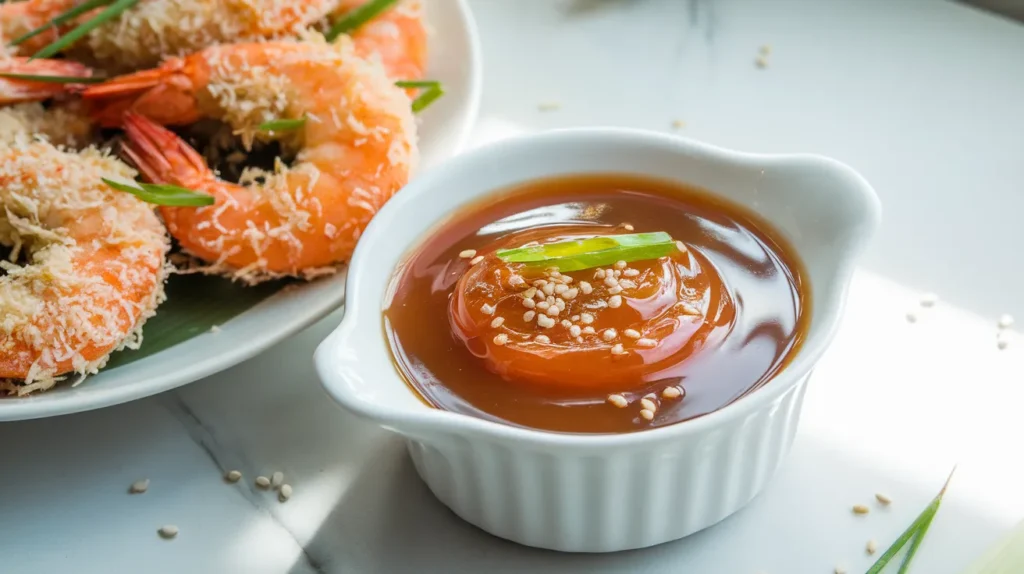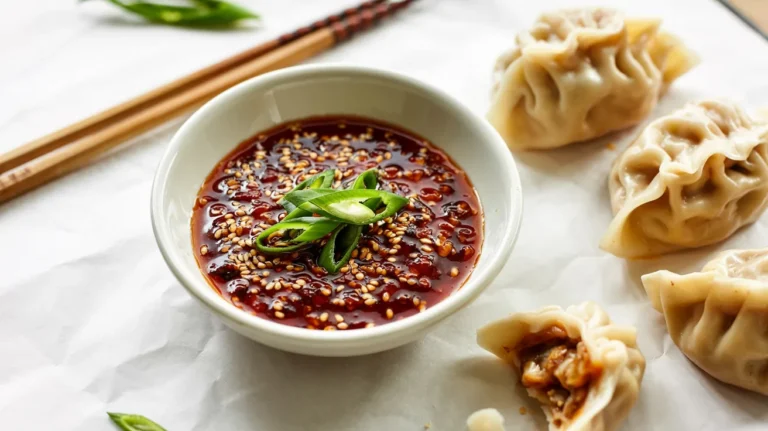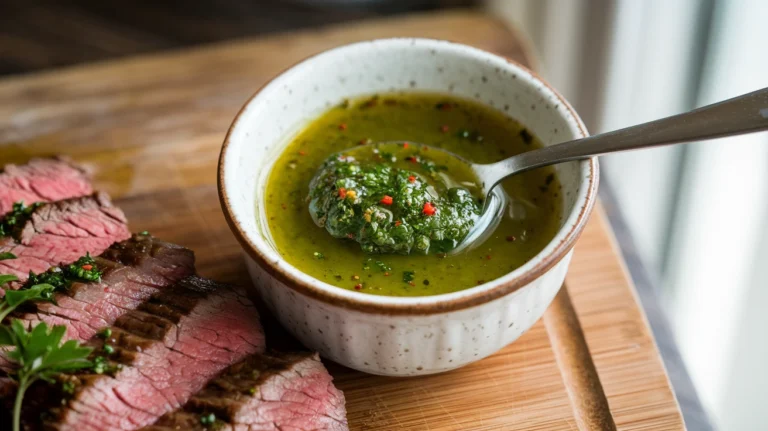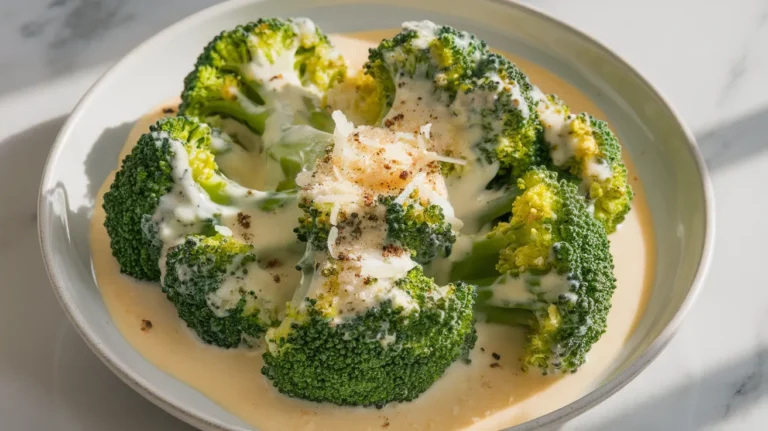This incredible sauce for coconut shrimp combines tropical pineapple sweetness with tangy citrus notes to create the ultimate dipping experience. Our foolproof sauce for coconut shrimp recipe delivers restaurant-quality results every time, with detailed steps that guarantee success even for complete beginners.
Recipe Info Bar
SERVES: 4 | PREP: 15 MIN | COOK: 10 MIN | TOTAL: 25 MIN
Ingredients
For the Sweet & Tangy Sauce for Coconut Shrimp
| Ingredient | Amount | Notes |
|---|---|---|
| Pineapple juice | 1 cup | Fresh or canned, no sugar added |
| Orange marmalade | ¼ cup | Or apricot preserves |
| Rice vinegar | 3 tablespoons | White vinegar works too |
| Soy sauce | 2 tablespoons | Low-sodium preferred |
| Fresh ginger | 1 tablespoon | Finely grated |
| Garlic | 2 cloves | Minced fresh |
| Red pepper flakes | ¼ teaspoon | Adjust to taste |
| Cornstarch | 2 tablespoons | For thickening |
| Water | 2 tablespoons | Cold water |
| Sesame oil | 1 teaspoon | Optional finishing touch |
Fresh Garnishes
- Green onions – 2 stalks, sliced thin
- Sesame seeds – 1 tablespoon, toasted
- Fresh cilantro – 2 tablespoons, chopped
Detailed Step-by-Step Instructions for Coconut Shrimp Sauce
Phase 1: Preparation Stage (5 minutes)
Step 1: Create Your Cornstarch Slurry Take a small bowl and add 2 tablespoons cornstarch. Slowly pour in 2 tablespoons cold water while whisking continuously with a fork or small whisk. Keep whisking until the mixture is completely smooth with no lumps visible. The mixture should look like thick cream. Set this aside – we’ll use it later to thicken our sauce. Pro tip: Cold water is crucial here because hot water will cause the cornstarch to clump immediately.
Step 2: Prepare Your Fresh Aromatics Take 2 garlic cloves and remove the papery skin by crushing them gently with the flat side of your knife, then peel. Mince the garlic as finely as possible – aim for pieces smaller than rice grains. For the fresh ginger, use a spoon to scrape off the thin skin, then grate using the smallest holes on your box grater or microplane. You want 1 tablespoon of finely grated ginger. Safety note: Keep your fingers away from the grater by leaving about an inch of ginger to hold.
Step 3: Gather All Ingredients Line up all your measured ingredients near the stove. This sauce for coconut shrimp moves quickly once you start cooking, so having everything ready prevents burning. Open your pineapple juice container and measure out exactly 1 cup. Temperature check: All ingredients should be at room temperature except the cornstarch slurry.
Phase 2: Building the Sauce Base (4 minutes)
Step 4: Heat Your Cooking Surface Choose a medium-sized saucepan (about 2-quart capacity works perfectly). Place it on your stovetop and turn the heat to medium. Let the pan heat for about 30 seconds. To test if it’s ready, sprinkle a tiny drop of water – it should sizzle gently, not violently. Important: Medium heat is key – high heat will burn your aromatics and ruin the sauce.
Step 5: Cook the Aromatics Add your minced garlic and ginger to the heated pan. You should hear a gentle sizzling sound immediately. Using a wooden spoon or heat-safe spatula, stir constantly for 30-45 seconds. The garlic should become fragrant but not brown – if you see browning, lower your heat immediately. Visual cue: The garlic should look slightly translucent, and you’ll smell an amazing aroma filling your kitchen.
Step 6: Add Your Liquid Base Pour in the 1 cup pineapple juice first – it will bubble and steam when it hits the hot pan. Next, add ¼ cup orange marmalade, 3 tablespoons rice vinegar, and 2 tablespoons soy sauce. Stir everything together with your wooden spoon until the marmalade completely dissolves into the liquid. Timing note: This should take about 1-2 minutes of gentle stirring.
Phase 3: Seasoning and Simmering (3 minutes)
Step 7: Add Heat and Spice Sprinkle in ¼ teaspoon red pepper flakes evenly across the surface. Stir to distribute them throughout the sauce. Beginner tip: Start with less if you’re sensitive to spice – you can always add more, but you can’t take it out once it’s in.
Step 8: Bring to Perfect Simmer Increase heat slightly to bring the mixture to a gentle simmer. You’ll see small bubbles forming around the edges first, then throughout the surface. This should take 2-3 minutes. Visual guide: A proper simmer looks like tiny bubbles constantly breaking the surface, not big rolling bubbles (that’s boiling and too hot).
Step 9: Taste and Adjust Flavors Using a clean spoon, carefully taste your sauce (blow on it first – it’s hot!). You should taste sweet pineapple first, followed by tangy vinegar, then a subtle salty note from the soy sauce. The heat should be barely noticeable. Adjustment guide: Too sweet? Add 1 teaspoon more vinegar. Too tangy? Add 1 tablespoon more marmalade. Not enough heat? Add more red pepper flakes.
Phase 4: Thickening the Sauce for Coconut Shrimp (3 minutes)
Step 10: Prepare for Thickening Give your cornstarch slurry one more good whisk – it may have separated while sitting. The mixture should be smooth and creamy again. Keep your sauce at a gentle simmer during this step. Critical timing: The sauce must be simmering when you add the cornstarch slurry for proper thickening.
Step 11: Add Thickening Agent While stirring the simmering sauce with one hand, slowly drizzle in the cornstarch slurry with the other hand. Pour it in a thin stream while stirring constantly – this prevents lumps from forming. Technique tip: Think of making a slow, steady stream about as thick as a pencil. Don’t dump it all in at once.
Step 12: Cook to Perfect Consistency Continue stirring and cooking for 2-3 minutes. You’ll notice the sauce becoming glossy and thicker. Consistency test: Dip your wooden spoon in the sauce, then lift it up. The sauce should coat the back of the spoon and when you draw your finger across the coating, it should leave a clear line. If it’s too thin, cook 1 more minute. If too thick, add 1 tablespoon pineapple juice.
Phase 5: Final Touches and Finishing (2 minutes)
Step 13: Remove from Heat Turn off the heat immediately once you reach the right consistency. The sauce will continue to thicken slightly from residual heat, so don’t overcook it. Common mistake: Leaving it on heat too long makes the sauce gummy and unappealing.
Step 14: Add Finishing Oil Drizzle in 1 teaspoon sesame oil while stirring gently. This adds incredible depth and a subtle nutty flavor that makes this sauce for coconut shrimp taste restaurant-quality. Optional: If you don’t have sesame oil, skip this step – the sauce will still be delicious.
Step 15: Final Seasoning Check Take one more taste with a clean spoon. The sauce should be perfectly balanced – sweet, tangy, slightly salty, with just a hint of heat. Last chance adjustments: Add a tiny pinch of salt if it tastes flat, or a few more red pepper flakes if you want more heat.
Step 16: Prepare for Serving Transfer your finished sauce for coconut shrimp to a serving bowl or small pitcher. The sauce should be warm and glossy, with a beautiful amber color. Serving temperature: Serve immediately while warm for the best experience with your coconut shrimp.
Chef’s Notes for Perfect Coconut Shrimp Sauce
Timing coordination – Start making this sauce for coconut shrimp when your coconut shrimp have about 10 minutes left in the oven. Both should finish at the same time for optimal serving temperature.
Consistency mastery – The perfect sauce should flow easily off a spoon but still coat the shrimp nicely. Too thick and it won’t distribute well; too thin and it slides right off.
Flavor balance secrets – This sauce for coconut shrimp achieves its magic through the perfect balance of sweet pineapple, tangy vinegar, umami from soy sauce, and aromatic fresh ginger.
Make-ahead advantage – The flavors actually improve when made a day ahead. The ginger and garlic meld beautifully with the other ingredients overnight.
Nutrition Information (Per Serving)
- Calories: 85
- Protein: 1g
- Carbohydrates: 21g
- Fat: 1g
- Sodium: 380mg
- Sugar: 18g
Creative Variations for Your Coconut Shrimp Sauce
Tropical Mango Version
Replace pineapple juice with mango nectar and add 1 finely minced jalapeño for a spicier tropical twist. This creates a completely different flavor profile while maintaining the perfect consistency.
Asian Fusion Coconut Shrimp Sauce
Add 1 tablespoon rice wine and 1 teaspoon Chinese five-spice during the simmering phase. This sophisticated variation would also complement venison steak beautifully for special occasions.
Citrus Herb Enhancement
Replace orange marmalade with lemon curd and whisk in 2 tablespoons fresh thyme at the end. This lighter version also works wonderfully with crab cakes for seafood variety.
Rich Coconut Cream Style
Stir in 3 tablespoons coconut cream after removing from heat. This creates an ultra-rich sauce that perfectly complements the coconut coating on your shrimp.
Storage & Reheating Your Sauce for Coconut Shrimp
Refrigerator Storage
Store cooled sauce in an airtight glass container for up to 5 days. The sauce actually develops better flavor as it sits, making it perfect for meal prep.
Freezing Guidelines
Pour into ice cube trays for individual serving portions. Once frozen solid, transfer cubes to freezer-safe bags labeled with the date. Keeps for 3 months.
Proper Reheating Technique
Warm gently in a small saucepan over low heat, stirring frequently. Add 1-2 tablespoons pineapple juice if the sauce has thickened too much during storage.
Make-Ahead Strategy
Prepare this sauce for coconut shrimp up to 48 hours in advance. The flavors meld beautifully, creating an even more complex and delicious result.

Beginner’s Troubleshooting Guide
Problem: My Sauce is Too Thin
Solution: Create a new cornstarch slurry using 1 teaspoon cornstarch and 1 teaspoon cold water. Whisk until smooth, then slowly add to your gently simmering sauce while stirring constantly. Cook for 1 minute more until thickened.
Problem: The Sauce Became Too Thick
Solution: Remove from heat and gradually whisk in pineapple juice one tablespoon at a time until you reach the desired consistency. Warm gently if needed before serving.
Problem: It Tastes Too Sweet
Solution: Balance the sweetness by adding 1 teaspoon rice vinegar or a small pinch of salt. Taste after each addition – small adjustments make big differences.
Problem: I Can See Lumps in My Sauce
Solution: Pour the sauce through a fine-mesh strainer into a clean bowl, pressing the lumps with the back of a spoon. Return the smooth sauce to the pan to reheat gently.
Problem: The Sauce Tastes Bitter
Solution: This usually means the garlic or ginger burned. Unfortunately, there’s no fix – you’ll need to start over with lower heat and constant stirring during the aromatic stage.
Problem: There’s No Heat at All
Solution: Add red pepper flakes gradually while the sauce is warm. Start with ⅛ teaspoon more, taste, and adjust as needed.
Essential Equipment for Making Coconut Shrimp Sauce
Must-Have Tools
- Medium saucepan (2-quart capacity ideal)
- Wire whisk for smooth mixing and preventing lumps
- Microplane grater for fresh ginger
- Small mixing bowl for cornstarch slurry
- Wooden spoon for stirring without scratching
Nice-to-Have Equipment
- Fine-mesh strainer as backup for lumpy sauce
- Digital kitchen scale for precise measurements
- Silicone spatula for scraping bowl clean
Equipment Alternatives for Beginners
- Small deep skillet can replace saucepan
- Fork works if no whisk available
- Sharp paring knife instead of microplane (mince ginger very fine)
- Measuring cups if no scale available
Complete Shopping List for Sauce for Coconut Shrimp
Pantry Staples Section
- Cornstarch (small container)
- Rice vinegar (bottle)
- Low-sodium soy sauce
- Sesame oil (small bottle)
- Red pepper flakes
Refrigerated Items
- Orange marmalade (or apricot preserves)
- Fresh ginger root (small piece)
- Fresh garlic bulb
Juice and Canned Goods
- Unsweetened pineapple juice (32 oz container)
Fresh Produce Section
- Green onions (1 bunch)
- Fresh cilantro (1 small bunch)
Optional Garnish Items
- Sesame seeds (small package)
Success Secrets for Perfect Coconut Shrimp Sauce
1. Master your heat control – Medium heat prevents burning while allowing proper flavor development. High heat ruins aromatics; low heat won’t activate the cornstarch properly.
2. Fresh ingredients make the difference – Fresh ginger and garlic create bright, vibrant flavors that bottled versions simply cannot match in this sauce for coconut shrimp.
3. Cornstarch technique mastery – Always mix with cold water first, add to simmering liquid in a thin stream while stirring, and cook just until thickened to avoid gumminess.
4. Taste and adjust philosophy – Every brand of pineapple juice has different sweetness levels, so trust your palate and adjust accordingly for the perfect balanced flavor.
5. Serving temperature matters – This sauce for coconut shrimp tastes absolutely best when both the sauce and shrimp are served warm and fresh from the kitchen.




